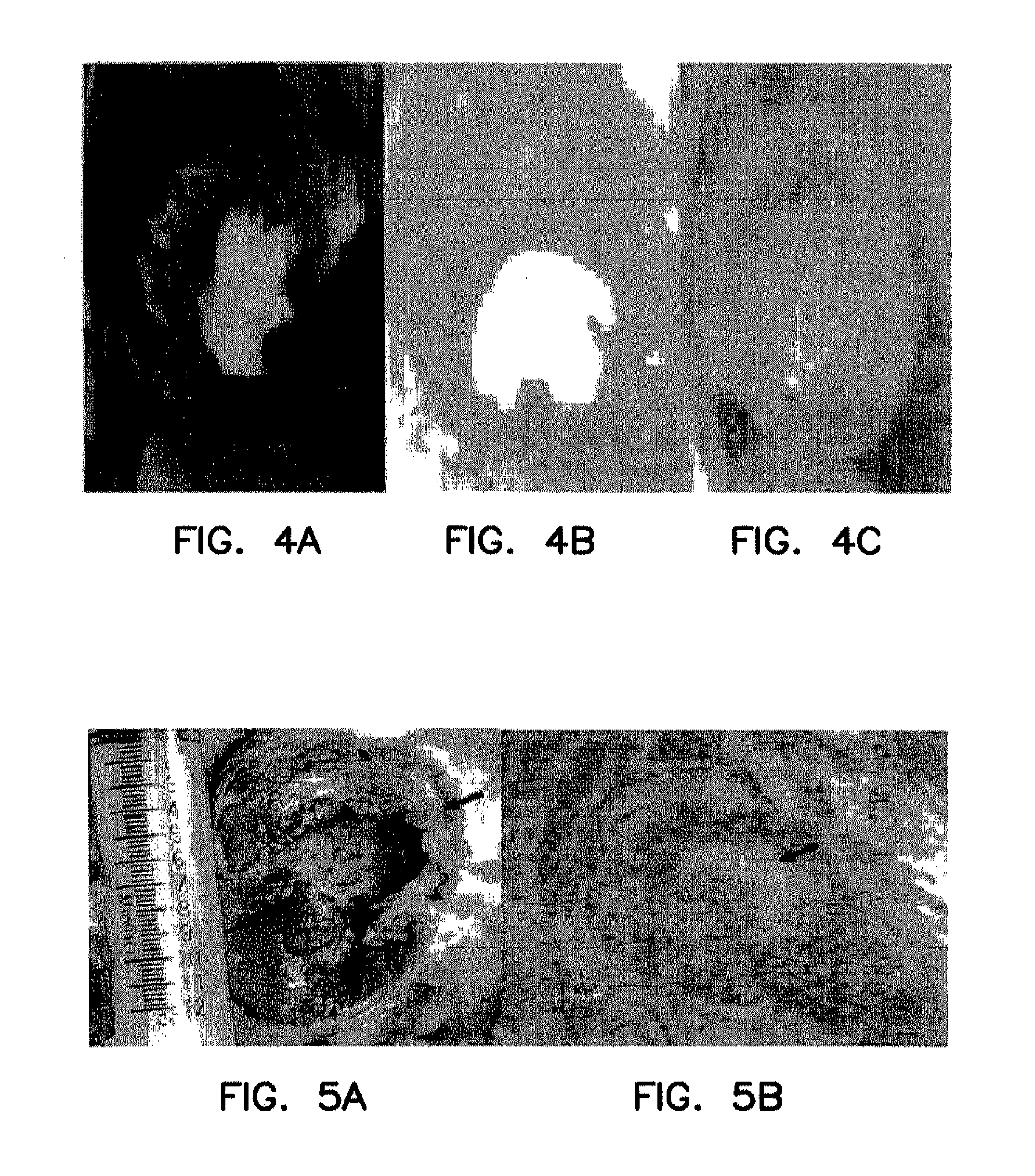MAPC generation of muscle
a striated muscle and muscle technology, applied in the field of striated muscle generation, can solve the problems of regional myocardial ischemia, cardiac damag, dependence on anaerobic glycolysis, etc., and achieve the effect of restoring or enhancing striated muscle function or mass, effectively restoring or enhancing striated muscle function in damaged tissues over time, and improving function and/or mass
- Summary
- Abstract
- Description
- Claims
- Application Information
AI Technical Summary
Benefits of technology
Problems solved by technology
Method used
Image
Examples
example 1
Development of a Chronic Ischemia Model in Dogs
[0195]The study was designed as a case control study with a single experimental (n=5) and a single control (n=5) group of dogs. A chronic injury, for example, a myocardial infarct, was created in the same fashion in all animals. The experimental and control group differed only in the agent injected stem cells or cell-free media, respectively. The experimental timeline displayed in FIG. 1 outlines the protocol. The time dependent change in myocardial function following stem cell therapy was evaluated by direct comparison to the control group.
[0196]Twelve hours prior to the procedure, all solid food was removed from the animal's kennel. Each animal received antibiotic prophylaxis with Noxcell (3 mg / kg s.c.). Induction of anesthesia was accomplished through a combination of xylazine (500 mg) and Telazole™ (4 mg / kg). The animals were then endotracheally intubated and placed on a mechanical ventilator. Continued maintenance anesthesia (Isofl...
example 2
Isolation and Expansion of Canine MAPCs
[0198]Under general anesthesia, the legs and iliac crests of each animal was antiseptically prepared and draped. Percutaneous insertion of a Jamshidi bone marrow aspirate needle was advanced into the proximal femur of both hind legs in all animals. A total volume of approximately 30 ml of dog bone marrow was aspirated from each animal. The bone marrow harvest was carried out as per guidelines of the University of Minnesota Committee on the Use of Animal Subjects in Research. BM mononuclear cells (BMMNCs) were obtained by Ficoll-hypaque density gradient centrifugation (Sigma Chemical, St. Louis, Mo.).
[0199]Cells obtained from the mononuclear layer were plated in 15 ml of expansion medium supplemented with 10 ng / ml EGF and 10 ng / ml PDGF-BB in T150 flasks coated with 10 ng / ml fibronectin (FN). Expansion medium consisted of 60% low-glucose DMEM (Gibco-BRL), 40% MCDB-201 (Sigma), 1× insulin-transferrin-selenium (ITS), 1× linoleic acid-bovine serum a...
example 3
Differentiation of Canine MAPCs
[0201]Endothelium: To induce differentiation into endothelial cells, MAPCs obtained after 35 population doublings were replated at 3.0×104 cells / cm2 in fibronectin-coated chamber slides in 60% low glucose DMEM (Invitrogen) and 40% MCDB-201 (Sigma), supplemented with 1× insulin-transferrin-selenium, 1× linoleic acid-BSA, 10−8 M dexamethasone, 10−4 M ascorbic acid 2-phosphate (all from Sigma), 100 U penicillin and 1000 U streptomycin (Invitrogen), plus 10 ng / ml VEGF (R & D Systems). Cultures were maintained by media exchange every 4-5 days. In some instances, FCS (Hyclone Laboratories) was added. In some instances, cells were subcultured after day 9 at a 1:4 dilution under the same culture conditions and supplemented with 10% FCS for more than 20 population doublings.
[0202]The cells attained a morphology characteristic of endothelial cells with cytoplasmic and morphological staining for vWF (FIG. 12d), which is also present at the RNA level (Table 3). Th...
PUM
 Login to View More
Login to View More Abstract
Description
Claims
Application Information
 Login to View More
Login to View More - R&D
- Intellectual Property
- Life Sciences
- Materials
- Tech Scout
- Unparalleled Data Quality
- Higher Quality Content
- 60% Fewer Hallucinations
Browse by: Latest US Patents, China's latest patents, Technical Efficacy Thesaurus, Application Domain, Technology Topic, Popular Technical Reports.
© 2025 PatSnap. All rights reserved.Legal|Privacy policy|Modern Slavery Act Transparency Statement|Sitemap|About US| Contact US: help@patsnap.com



